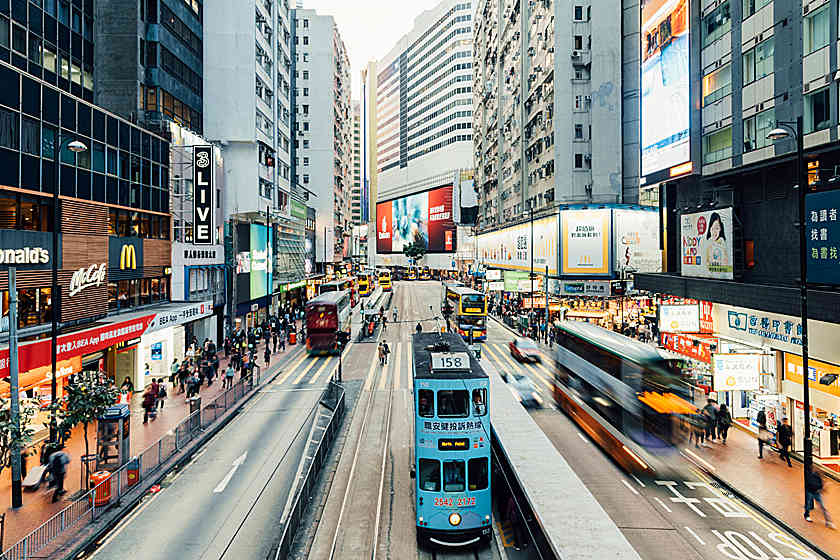Chinese Name: 中环 Pronunciation: zhōng huán
Best Visiting Time: All year round
Admission Ticket Fare: Free
Opening Hours: All day
Suggested Visiting Hours: 2-3 Hours
Address: Located in Central and Western District, on the north shore of Hong Kong Island.
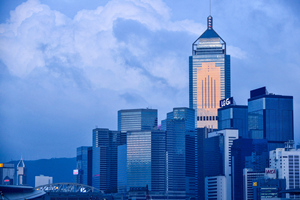
Central (also Central District) is the heart of Hong Kong Island. The Central District is the commercial, financial and banking center of Hong Kong. It is also the decision-making and power center of the Hong Kong Special Administrative Region Government. The headquarters of the Hong Kong Special Administrative Region Government and the Legislative Council Building are located here.
Central is one of the most famous shopping places in Hong Kong. There are many famous brand flagship stores at home and abroad in Des Voeux Road Central and Queen's Road Central, as well as large shopping malls such as The Landmark and Prince Building. In recent years, some new and distinctive fashion stores have been opened along Wyndham Street and On Lan street. And Hollywood Road, where antiques are sold in this district, has just been selected as one of the top ten shopping streets in the world. All types of shops are all-encompassing.
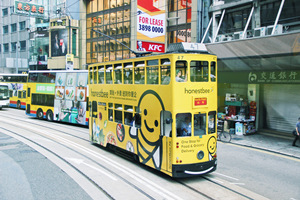
Central is the core area of Hong Kong. It is also the first area developed after the opening of the port on Hong Kong Island. When the British occupied Hong Kong in 1841, the British took the lead in establishing their military base in Central and quickly built a number of main roads. The hillside of Lower Albert Road was designated as a government-only area as early as 1841 when the port was opened. The Governor's Mansion, a symbol of the British Hong Kong government at that time, was located in the center of the government hill. Therefore, Central is part of Victoria City in history.
In the 1970s and 80s, Central reached its peak. At that time, Hong Kong's financial market began to flourish and multistory skyscrapers were built in Central, including the headquarters of various banks. Therefore, most of Hong Kong's business activities are carried out in Central, and many Hong Kong people are proud of working in Central.
However, due to less land and large population in Central, the rent here is very expensive. As a result, the main commercial districts on Hong Kong Island have been gradually expanded from Central to Sheung Wan, Admiralty and the North Shore of Wan Chai, and the flow of people has gradually fallen below the previous level. However, Central is still the heart and financial market center of Hong Kong and there are still frequent commercial activities here.
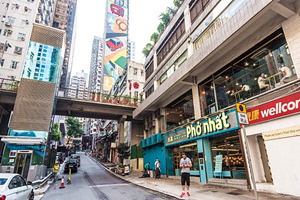
This street looks ordinary, but it has great historical significance for Hong Kong. On January 25th, 1841, the British navy landed on the "Occupation Point" (the location of Hollywood Road Park now) near Pudangkou Street and held a flag-raising ceremony the next day, officially opening the 150-year colonial history of Hong Kong. Today, this area, which originally stretches along the coast, has taken on a new look after reclamation. There are many trendy restaurants and small shops, as well as many old shops that have remained the unique charm of old Hong Kong.

Chu Wing Kee, an old-fashioned grocery store, which specializes in traditional and affordable daily necessities. The small grocery store is full of goods, and there are surprises in every corner: old pottery and teapots are stacked on top of each other; bamboo baskets hang from the ceiling; and feather dusters and kerosene stoves form their own corner. These seemingly ordinary household items are full of warm memories of old Hong Kong.
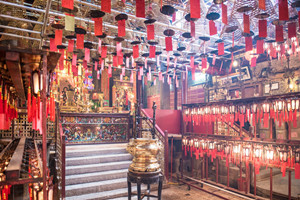
Man Mo Temple is a stunning complex, which has been built more than 150 years. It comprises three blocks, each serving different purposes. The namesake structure, Man Mo Temple, pays tribute to the God of Literature and the God of War, while Lit Shing Kung was created for all heavenly gods. Later, Kung Sor became an auditorium for resolving community disputes.
In addition, the bronze bell built in 1847 and the official sedan chair built in 1862 are well preserved in the Man Mo Temple. The granite pillars, granite door frames, wood-carved plaques and historic murals on the roof of the ancient temple are ingenious, and the whole building shows exquisite traditional craftsmanship.
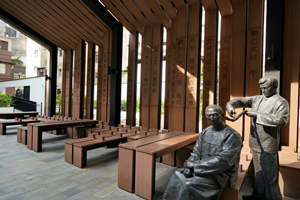
Pak Tsz Lane Park, as tranquil patch of green, is rare in the downtown area, and it is also one of the 16 stops of the Dr Sun Yat-sen Historic Trail. On March 13rd, 1892, Yeung Ku-wan and Tse Tsan-tai founded the Furen Literary Society at Pak Tsz Lane No. 1 next to the park with the purpose of providing a venue for revolutionary veterans to gather for meetings. This group eventually merged with Dr Sun Yat-sen’s Revive China Society and participated in the 1911 Revolution.
Pak Tsz Lane Park not only adopts modern architectural design, but has a historical exhibition corridor and a revolutionary history exploration park, which introduce the revolutionary deeds of the Furen Literary Society in an interactive form, allowing visitors to understand this period of history.
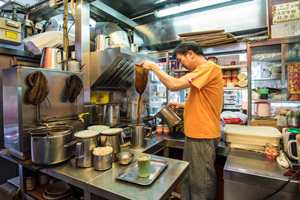
Where can visitors drink a cup of authentic Hong Kong-style milk tea? Lan Fong Yuen is the best place to go. The popular beverage is influenced by British culture but is made with evaporated milk and sugar. At Lan Fong Yuen, you can try the famous "silk stockings milk tea". It goes through a fine mesh to make the milk tea taste particularly smooth. While Lan Fong Yuen’s original street stall still stands today under the Central-Mid-Levels escalator, diners can also head to the sit-down restaurant right next door to enjoy dishes such as the chicken noodles with scallion oil.
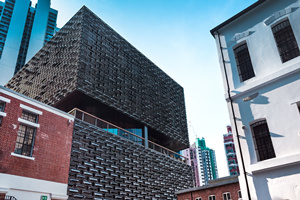
Tai Kwun, which means “big station” in Chinese, is the abbreviation of the former central police compound. It has a history of more than 170 years. Tai Kwun comprises 16 heritage buildings which are all magnificent works. The former police headquarters building adopts neo-classical and retro design while the barracks building built between 1862 and 1864 incorporates unique Roman-style arches and the design is eye-catching.
"Tai Kwun" was changed in 2018. The historical site has been perfectly preserved and has become an art and cultural center. Together with two brand new buildings, you can find various styles of art galleries, specialty shops, bars and restaurants in a small artistic atmosphere, and you can also participate in art exhibitions, performances, workshops, film screenings and other activities.
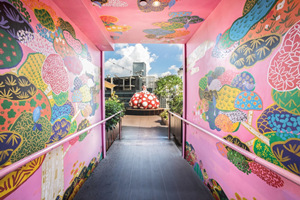
This rooftop terrace is one of the coolest places in town to wine, dine and entertain. Located on the top floor of H Queen’s, Piqniq is a rooftop terrace with integrated rooftop bar, restaurant and party venue. In addition to the endless intoxicating scenery, there is also a giant pumpkin sculpture made by the world-renowned Japanese artist Yayoi Kusama. The bright red dotted pumpkin is very charming against the blue sky and white clouds!
In this stylish and whimsical space, visitors can lie on one of the comfy beanbags and savor various wines and specialty cocktails. You can also choose a "Picnic Basket" to match up with international cuisines from French meat platter and fragrant cheese to Japanese spicy tuna rolls and thick-cut Wagyu Sando.
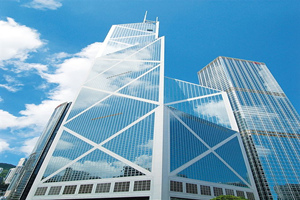
The Bank of China Tower is the headquarter building of the Bank of China in Hong Kong. It is located at the Garden Road, Central District, Hong Kong. It was designed by Chinese-American architect I.M. Pei.
The Bank of China Tower was completed in 1989, covering an area of approximately 8,400 square meters with 70 floors above the ground and a height of 315 meters. When completed, it is the tallest building in Asia. The appearance of the building is like a bamboo, which is a symbol of strength, vitality, vigor, and enterprising spirit. The stone walls on the base represent the Great Wall, symbolizing China.
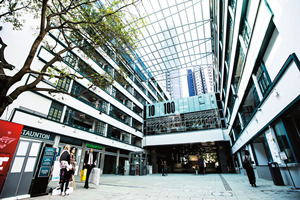
PMQ, which is full of local brand boutiques and brings together local artists, is a great place to experience the local craftsman culture of Hong Kong. It was originally a Western-style official school and the Central College was moved here in 1889. After more than half a century, it was converted into the Hollywood Road Police Married Quarters. It became a cultural and creative landmark in 2014.
In addition to admiring the profound history of the building itself, you can also visit many artist studios and boutique shops here to learn about the craftsmanship of Hong Kong and their source of inspiration. The handmade souvenirs sold in the small shops are ingenious and unique, which are suitable for tourists to give to their friends and relatives as gifts.
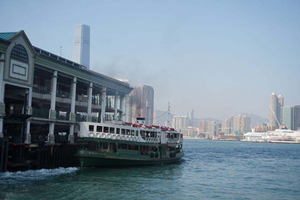
The Star Ferry is a means of transportation with a long history of more than 100 years, as famous as the Hong Kong Tram and the Victoria Peak Tram.
The Star Ferry that shuttles through Victoria Harbor is not only an important part of the sea-crossing transportation system between Hong Kong Island and Kowloon, but also the preferred itinerary for visitors to visit Victoria Harbor. National Geographic Tourism Journal once put the Star Ferry on board Visiting Victoria Harbor, known as one of the "50 must-see attractions in life".
Possession Street → Chu Wing Kee → Tai Ping Shan Street → Upper Lascar Row → Man Mo Temple → Pak Tsz Lane Park → Tai Cheong → Lan Fong Yuen → Tai Kwun → Piqniq
Central is the main transportation hub of Hong Kong. Buses, subway, ferries, trams and taxi are all available in Central.
By Bus
You can take 2、4、13、15、15C、18、18P、23A、25、26、46X、M49、66、91、M590、720、M722(New Territories Bus).
You can take 1、3B、5、5B、6、6X、7、10、11、12、37A、37B、40M、70、71、75、90、90B、92、96、97、780、788、A11、A12、E11(City Bus).
You can take 101、104、109、111、113、115、603、619、681、690、692、905、914、930、960、961、962、962X、968、968X、969(Cross Harbor Tunnel Route).
By Subway
You can take MTR Island Line or MTR Tsuen Wan Line and get off at Central Station.
You can take MTR Tung Chung Line and get off at Hong Kong Station.
You can take MTR Airport Express, and get off at Hong Kong Station and take the MTR Airport Express from the airport to Central in just 24 minutes.
By Tram
There are 6 tram lines to Central, namely Shau Kei Wan to Sheung Wan (Western Harbour City), Shau Kei Wan to Happy Valley, North Point to Shek Tong Tsui, Causeway Bay to Shek Tong Tsui, Happy Valley to Kennedy Town, Shau Kei Wan to Kennedy Town.
By Taxi
Chinese: 请带我去中环。English: Please take me to the Central District.
If you go to Central from Hong Kong International Airport, it takes about 35 minutes (about 280 yuan).
If you go to Central from Tsim Sha Tsui, it takes about 15 minutes (about 65 yuan).
If you go to Central from Hong Kong Disneyland, it takes about 25 minutes (about 200 yuan).
If you go to Central from New Territories, it takes about 20 minutes (about 135 yuan).
If you go to Central from Hong Kong Ocean Park, it takes about 12 minutes (about 60 yuan).
